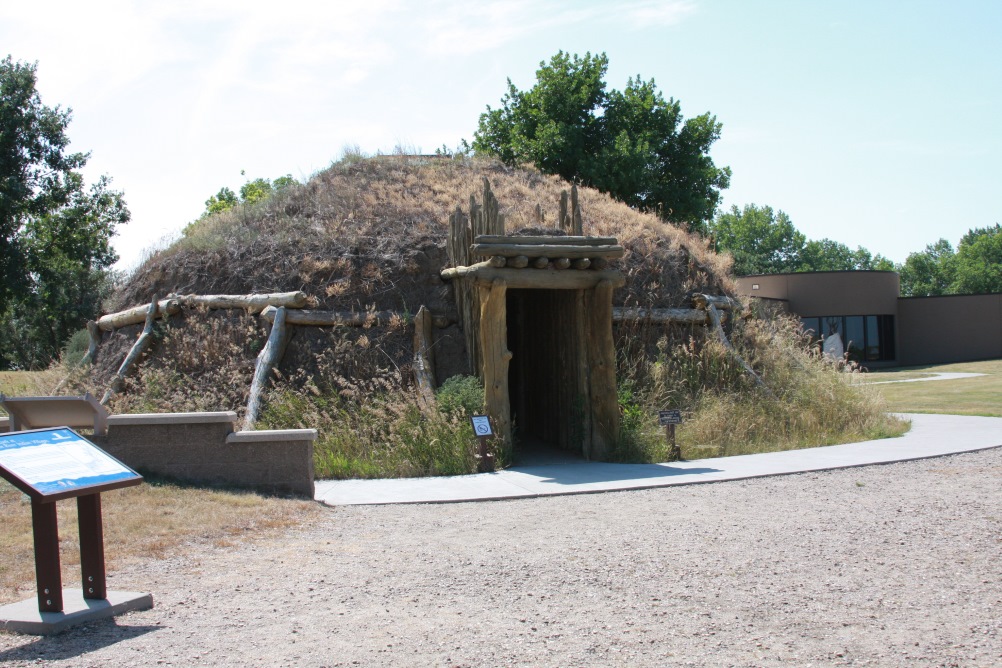August 12, 2022 @ 14:40 CDT
Site Visit #50
In 1804, the Lewis and Clark expedition arrived at the village of the Hidatsa people along the Knife River in North Dakota. It was here that they were introduced to Sacagawea who would accompany their expedition onto the Pacific.
Sacagawea was actually a Shoshone Indian in Idaho, who historians believe was taken captive by a Hidatsa raiding party and taken to their home in central North Dakota. Here she married a fur trader named Charbonneau at the age of 16. Lewis and Clark had hired Charbonneau as a guide and Sacagawea joined the expedition, having knowledge of lands to the West.
The Hidatsa and other native tribes had lived along this river for centuries. The village consisted of earth lodges located on a rise above the river. They raised crops and hunted Buffalo to sustain the village. In the winter they moved to more sheltered locations leaving the main village unoccupied until the following spring.

The Knife River Indian Villages National Historic Site has a small visitor center showing a brief film about the life of the native peoples. The film is rather interesting as it is presented as an oration by a woman of the Hidatsa tribe who lived in the latter half of the 19th century.
Outside of the visitor center is a reconstruction of an earth lodge used by the various tribes that lived along the river. Though it does not look very big from the outside, upon entering the lodge one feels a sense of roominess and comfort. The thick earth walls kept the inside cool despite near 90 degree temperatures outside, and I’m sure did the reverse during the cooler weather in fall and spring.
A trail leaves from the visitor center and passes a field where small hills of dirt are all that’s left of where the earthen lodges stood. The trail continues to the site of other villages, though I did not follow it to its end. Ninety degree temperatures and a hot sun deterred me from going too far along the trail.
Though there is not a lot of physical stuff at this site, the historical information passed along in the film and in the various exhibits was it self fascinating and an insight to life for some peoples on the High Plains of North Dakota.
Steve